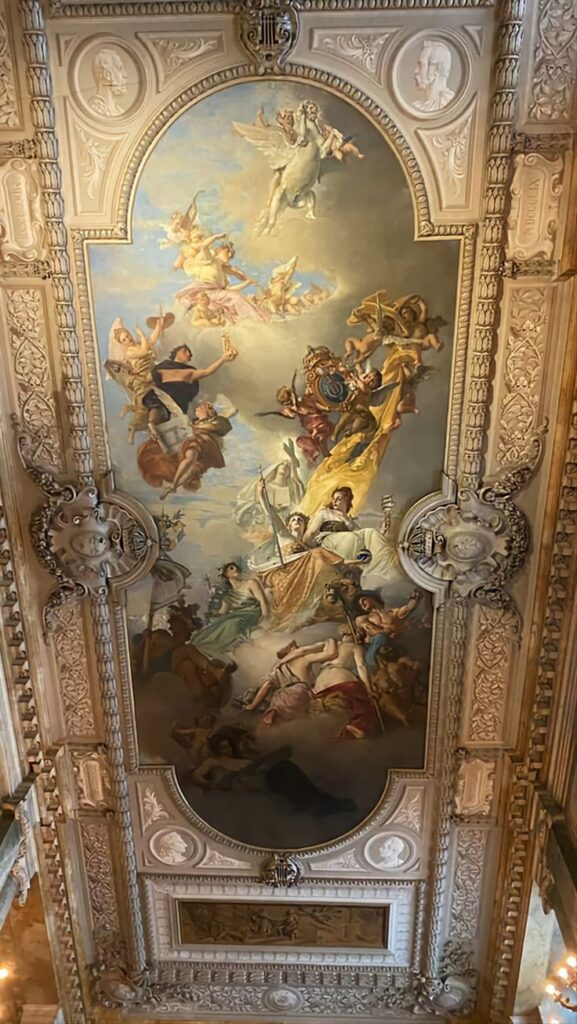Architecture is an art form that has been around for centuries, and has played an important role in shaping the way we live our lives. Over the years, architects have experimented with different styles, materials, and techniques to create some of the most iconic structures in the world. From the ancient pyramids of Egypt to the modern skyscrapers of New York City, architectural design has undergone a fascinating evolution that continues to inspire and captivate us. In this blog post, we will take you on a journey through time to explore the different eras of architectural design, highlighting some of the most important features of each period and the structures that defined them. Join us as we explore the evolution of architectural design from its early beginnings to the present day, and discover how it has influenced our lives and the world around us.
1. Introduction to architectural design eras

Architectural design has been an integral part of human civilization since the beginning of time. From the early days of rudimentary shelters made of mud and stone to the stunning skyscrapers of modern times, architectural design has evolved through countless eras and styles.
Each era has been marked by its own distinctive features, ranging from the materials used to the shapes and forms that defined the structures. But what really stands out is the way in which architecture has reflected the values, beliefs, and aspirations of the societies that created it.
From the grandiose pyramids of the ancient Egyptians to the ornate Gothic cathedrals of medieval Europe, architectural design has always been a powerful expression of culture and history. Each era has left an indelible mark on the built environment, shaping the way we live, work, and interact with the world around us.
In this blog series, we will take you on a fascinating journey through architectural design eras, exploring the key features, styles, and innovations that defined each era. From the classical beauty of Greek and Roman architecture to the sleek lines of Art Deco and beyond, we will delve into the rich history of architectural design, discovering the stories behind some of the world’s most iconic structures and the people who created them.
2. The Ancient Era – Pyramids, temples, and the Greek orders

The ancient era of architecture is perhaps one of the most fascinating and awe-inspiring periods in human history. It’s a testament to the ingenuity, creativity, and engineering prowess of our ancestors. The most recognizable and iconic structures from this era are undoubtedly the pyramids of Egypt. These massive structures were built as tombs for pharaohs and their consorts and remain one of the most enduring symbols of the ancient world. The sheer scale of these structures is truly remarkable and the fact that they were built over 4,500 years ago is a testament to the skill and knowledge of the architects and engineers of the time.
The ancient Greeks also made significant contributions to the field of architecture with the development of the three classical orders – Doric, Ionic, and Corinthian. These orders were used to create the famous Greek temples that still stand today, such as the Parthenon in Athens. The Doric order was the simplest, with plain columns and no decorative details, while the Ionic and Corinthian orders were more ornate and elaborate, with intricate carvings and decorations.
In addition to the pyramids and temples, the ancient era also gave rise to other impressive structures such as the Great Wall of China, the Colosseum in Rome, and the ancient city of Petra in Jordan. These architectural wonders continue to inspire and captivate people around the world, and serve as a reminder of the incredible achievements of our ancestors in the field of design and engineering.
3. Medieval Times – Castles, cathedrals, and religious architecture

The medieval era saw the rise of castles, cathedrals, and religious architecture. This era spans from the 5th to the 15th century and was characterized by a focus on defense and religion. Castles were built to protect the ruling class and their subjects from invaders. They were typically tall structures with thick walls, narrow windows, and drawbridges. These castles were also fortified with towers, battlements, and moats to further strengthen their defenses.
Cathedrals, on the other hand, were built for religious purposes. These grand structures were often the center of a city and were designed to awe and inspire visitors. They were characterized by their high ceilings, stained glass windows, and intricate sculptures, which were meant to depict stories from the Bible.
Religious architecture was also prevalent during this era, with monasteries, churches, and mosques being built across Europe and the Middle East. Some of the most iconic examples of medieval religious architecture include the Notre-Dame Cathedral in Paris, St. Peter’s Basilica in Rome, and the Alhambra in Granada.
The medieval era was also marked by a transition from Romanesque to Gothic architecture. Romanesque architecture was characterized by rounded arches, thick walls, and barrel vaults, while Gothic architecture was characterized by pointed arches, ribbed vaults, and flying buttresses. This transition can be seen in the evolution of cathedrals such as the Chartres Cathedral in France, which was built in the 12th century in the Romanesque style, and later renovated in the Gothic style in the 13th century.
Overall, the medieval era was a time of great architectural innovation, with castles, cathedrals, and religious architecture becoming some of the most iconic structures in history. Today, these structures continue to inspire and amaze visitors from around the world.
4. The Renaissance – Symmetry, proportion, and the revival of classical design

The Renaissance period in architectural design spanned from the early 15th century to the start of the 17th century. During this period, architects rediscovered the principles of classical design, which laid the foundation for the architectural design of the modern era.
Symmetry and proportion were two key elements that characterized the Renaissance architecture. Architects employed mathematical ratios to create harmonious designs that were pleasing to the eye. The use of circles, squares, and triangles was popular in the design of buildings and their features.
Classical styles such as Ancient Greek and Roman were revived during this period, and their influence can be seen in many buildings constructed during the Renaissance. The use of columns, pediments, and domes became popular and were used to create grand facades for public buildings, churches, and palaces.
Leonardo da Vinci and Michelangelo, two of the most famous artists of the Renaissance, also contributed to architectural design. Leonardo da Vinci’s sketches of flying machines and hydraulic systems inspired architects to experiment with new technologies and designs. Michelangelo’s work on the dome of St. Peter’s Basilica in the Vatican City is a testament to his mastery of proportion and symmetry.
Overall, the Renaissance period was a time of great creativity and experimentation in architectural design. The principles of symmetry, proportion, and classical design that emerged during this period continue to influence architecture to this day.
5. The Baroque and Rococo – Grandeur, ornamentation, and dramatic effect

The Baroque and Rococo periods were an explosion of imagination, luxury, and grandeur. These periods were marked by a return to the principles of the ancient world and the use of ornamentation to achieve dramatic effect. It was a time when art was at the forefront of design, and an incredible amount of attention was given to the smallest detail.
The Baroque style, which emerged in Rome in the early 17th century, was characterized by opulence, movement, and drama. This style was inspired by the principles of the ancient world, where the focus was on the grandeur of form and the dramatic effect of light and shadow. Buildings in the Baroque style were often characterized by large, curving facades, ornate details, and dramatic use of light and shadow.
In the Rococo period, which emerged in the mid-18th century, there was a shift towards a more playful and fanciful style. The Rococo style was characterized by delicate, intricate designs, asymmetrical forms, and an emphasis on lightness and elegance. In contrast to the grandeur of the Baroque, the Rococo style was more refined and delicate, with intricate designs that often featured natural motifs, such as flowers and shells.
The Baroque and Rococo styles were particularly popular in Europe, especially in Italy, France, and Germany. The opulence and grandeur of these styles were a reflection of the wealth and power of the aristocracy, who commissioned many of the most elaborate buildings and works of art.
Today, the legacy of the Baroque and Rococo can be seen in many of the most iconic buildings and works of art in Europe. From the grandeur of the Palace of Versailles to the intricate designs of the Trevi Fountain in Rome, these styles continue to captivate and inspire us with their beauty and elegance.
6. The Industrial Revolution – From iron bridges to skyscrapers

The Industrial Revolution in the mid-18th century brought about a significant change in architectural design. With the advent of new technologies, architects were able to experiment with new materials and building techniques, leading to the creation of remarkable structures that were not possible before.
One of the most significant advancements in this period was the use of iron as a building material. Iron was used to construct bridges, railway stations, and factories. The construction of the Iron Bridge in Shropshire, England, in 1779, was a landmark achievement in the use of iron as a structural material.
The Industrial Revolution also brought about improvements in construction methods and materials, allowing architects to design tall buildings and skyscrapers. The Home Insurance Building in Chicago, built-in 1885, is considered the world’s first skyscraper. It was ten stories tall and made possible by the invention of the elevator and the use of steel framework.
Architects during the Industrial Revolution also focused on designing buildings that were functional and efficient, reflecting the period’s industrialization. This led to the creation of factories and warehouses that were designed to optimize production and storage space.
The Industrial Revolution marked a significant shift in architectural design, with architects experimenting with new materials, construction methods, and designs. The legacy of this period can be seen in the skyscrapers and industrial buildings that still stand tall today, a testament to the ingenuity and creativity of the architects of this era.
7. Modernism – The Bauhaus movement, functionalism, and minimalism

The Modernism era of architecture is all about simplicity. It was characterized by a focus on function over form, and a move away from the ornate and decorative styles of the past. This era began in the early 20th century and is still influential today.
One of the most important movements of this era was the Bauhaus movement, which originated in Germany in the 1910s. The Bauhaus school was founded by Walter Gropius, and it brought together artists, designers, and architects to create a new kind of design that was focused on simplicity and functionality. The Bauhaus style is characterized by clean lines, simple shapes, and a lack of decoration. It was also characterized by the use of new materials like steel and concrete, which allowed for the construction of tall, modern buildings.
Functionalism was another important aspect of Modernism. This style emphasized the importance of designing buildings that were practical and efficient, rather than just decorative. The idea was that a building should be designed to serve a specific purpose, and that every element of the design should be focused on achieving that purpose.
Minimalism was also an important part of Modernism. This style is characterized by a focus on simplicity and the use of minimal elements in design. Minimalist architects and designers believed that less was more, and that a building or object could be beautiful in its simplicity.
Overall, the Modernism era of architecture was a time of great change and innovation. It brought about a new way of thinking about design, and its influence can still be seen in many of the buildings and structures around us today.
8. Post-modernism – Experimentation, diversity, and the return of ornament

Post-modernism was a reaction to the modernist movement that preceded it. The modernist movement had striven to create buildings with clean lines, simple forms, and a focus on functionality. Post-modernism, on the other hand, sought to reintroduce ornamentation and decoration into architecture while retaining the focus on functionality.
The movement was characterized by experimentation and diversity. Architects were no longer bound by the strict rules of modernism and were free to experiment with form, materials, and ornamentation. As a result, buildings from this era are incredibly diverse and can range from the playful and whimsical to the grand and imposing.
One of the most famous examples of post-modern architecture is the AT&T Building in New York City, designed by Philip Johnson and John Burgee. The building’s iconic “Chippendale” top, which features a series of ornamental arches, was a deliberate nod to the past and a rejection of modernism’s emphasis on clean lines and simplicity.
Post-modernism also saw a return to historical references and a focus on context. Architects sought to create buildings that responded to their surroundings and drew inspiration from historical styles and motifs. This led to a renewed interest in traditional building methods and materials and a rejection of the industrial materials that had dominated modernist architecture.
Overall, post-modernism was a rich and diverse movement that celebrated experimentation, ornamentation, and historical references. While it has been criticized for being too eclectic and lacking a clear direction, it remains an important era in the history of architecture and continues to inspire architects and designers today.
9. Contemporary Architecture – Sustainability, technology, and the future of design

Contemporary architecture is a fascinating era of design that brings together sustainability, technology, and the future of design. With growing concerns about the environment, architects are now looking for ways to design buildings that are sustainable and eco-friendly.
One of the key features of contemporary architecture is the use of renewable energy sources such as solar and wind power. Buildings are designed to capture natural light and ventilation, which not only reduces energy consumption but also creates a comfortable living environment for occupants.
Technology is also playing a significant role in contemporary architecture. With the rise of smart homes, buildings are now designed to be integrated with technology to provide a seamless living experience. For example, heating, lighting, and security systems can be controlled remotely using a smartphone or tablet.
Another trend in contemporary architecture is the use of innovative materials such as carbon fiber, which is lightweight and strong, offering limitless possibilities for design. Architects are also experimenting with new construction techniques such as 3D printing, which allows for greater precision and speed in building design.
As we look to the future of architecture, it’s clear that sustainable design and technology will continue to shape the industry. The use of renewable energy sources and innovative materials will become more prevalent, and buildings will become smarter and more intuitive, offering a more comfortable and efficient living experience for occupants.
10. Conclusion – The impact of architectural design on society and culture

This is Nautilus Eco-Resort project where architects design a conceptual zero- energy, zero waste Eco resort in Philippines. Throughout history, architectural design has played a significant role in shaping the society and culture of the time. From the great pyramids of Egypt to the towering skyscrapers of today’s modern cities, architecture has been a reflection of humanity’s progress and aspirations for the future.
One of the most significant impacts of architectural design on society and culture is the creation of iconic landmarks that become symbols of their respective cities or nations. Think of the Eiffel Tower in Paris, the Burj Khalifa in Dubai, or the Sydney Opera House in Australia. These buildings not only serve as functional structures but also as cultural and historical landmarks that bring people from all over the world together to appreciate their beauty and significance.
Architectural design also has the power to influence our behaviour and shape our experiences. For example, a well-designed public space can encourage social interaction and community engagement, while a poorly designed space can discourage people from using it altogether. Architectural design can also impact our mood and emotions, with studies showing that exposure to natural elements such as sunlight and greenery can improve our mental health and wellbeing.
In conclusion, architectural design has had a profound impact on society and culture throughout history, shaping our built environment and influencing our behaviour and experiences. As we continue to push the boundaries of architecture and design, it’s important to consider the impact that our creations will have on future generations and strive to create buildings and spaces that not only serve our immediate needs but also stand the test of time as cultural and historical landmarks.
We hope you enjoyed our journey through architectural design eras. From the ancient pyramids of Egypt to the modern skyscrapers of today, architecture has constantly evolved and adapted to the needs and desires of society. We hope that this blog post has given you a new appreciation for the art of architecture and the impact it has had on our world. As you walk around your city, take a moment to appreciate the buildings around you and think about the history and evolution of architectural design. Thank you for joining us https://designvaluez.com on this fascinating journey.




